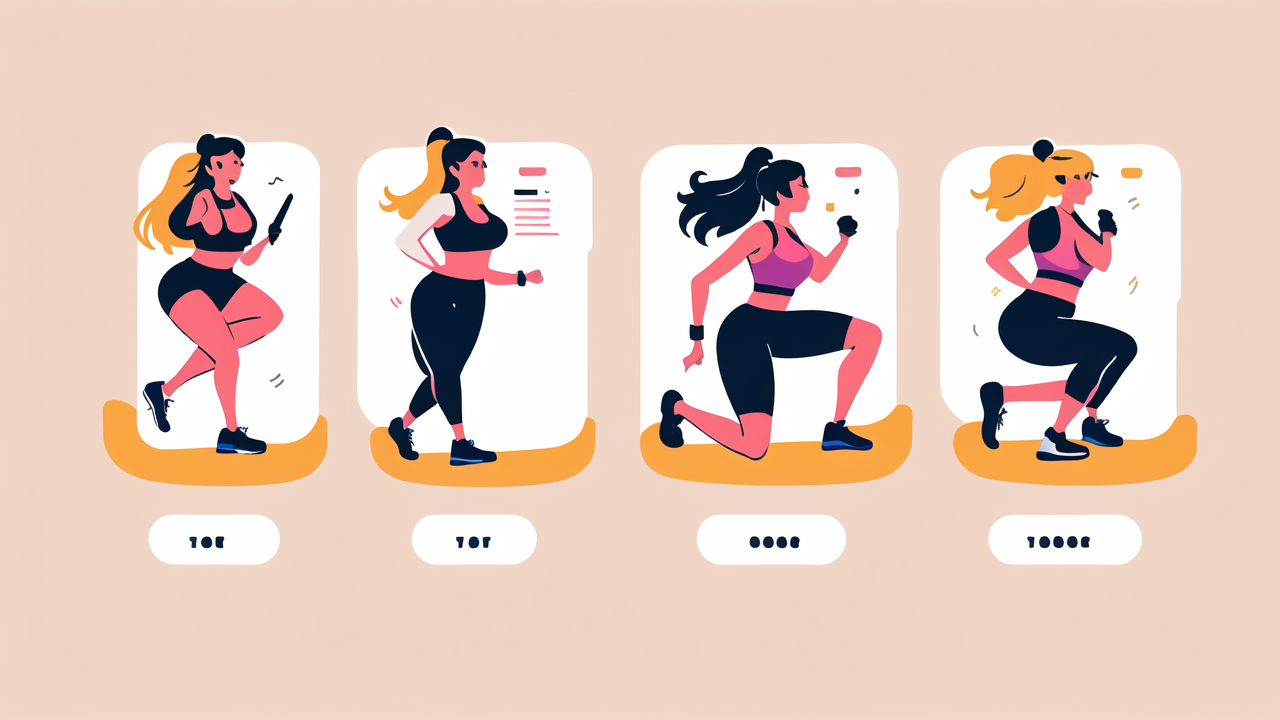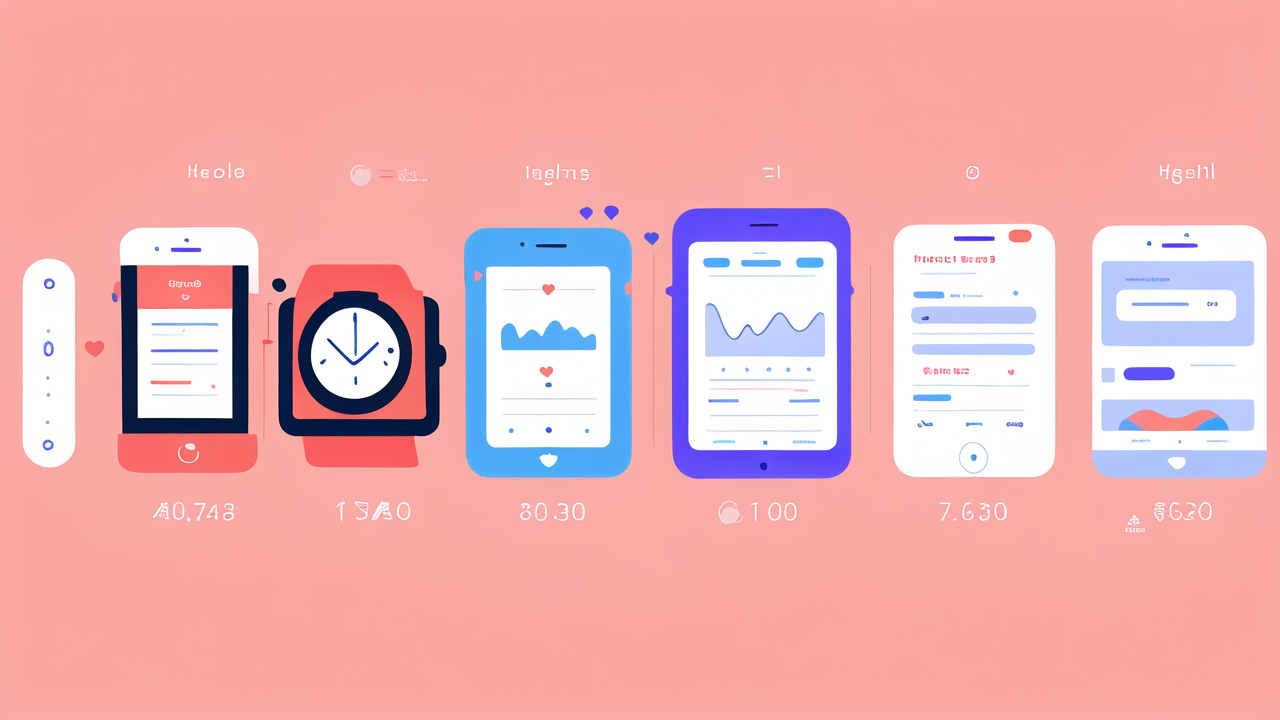Understanding Smart Bracelets in Fitness
The Evolution of Smart Bracelets in the Fitness Industry
Smart bracelets have come a long way in the fitness world. They started as simple step counters. Now, they're high-tech gadgets that do much more. These devices have evolved to track various health metrics. They monitor heart rate, sleep patterns, and even stress levels.

The first smart bracelets were basic. They only counted steps and estimated calories burned. As technology advanced, so did their features. Today's smart bracelets can track workouts, monitor oxygen levels, and even detect falls. Some can even connect to your smartphone for added functionality.
The fitness industry has embraced smart bracelets. Many gyms and trainers now use them to help clients. They provide valuable data for creating personalized fitness plans. This evolution has made smart bracelets an essential tool for many fitness enthusiasts.
Key Features of Top Fitness Smart Bracelets
Top fitness smart bracelets offer a range of features to help users achieve their goals. Here are some key features:
- Heart Rate Monitoring: Tracks your heart rate during workouts and rest.
- GPS Tracking: Maps your runs, walks, and bike rides.
- Sleep Tracking: Monitors sleep patterns and quality.
- Water Resistance: Allows for use during swimming and water sports.
- Long Battery Life: Lasts for days or even weeks on a single charge.
- Smartphone Notifications: Displays calls, texts, and app alerts.
- Customizable Goals: Lets you set and track personal fitness targets.
- Multiple Sport Modes: Tracks various activities like running, cycling, and yoga.
These features help users get a complete picture of their fitness journey. They provide valuable insights into both exercise and recovery. This data can help users make informed decisions about their health and fitness routines.
How Smart Bracelets Enhance Workout Efficiency
Smart bracelets can significantly boost workout efficiency in several ways. First, they provide real-time feedback during exercise. This allows users to adjust their intensity on the spot. For example, if your heart rate is too low, you can push harder. If it's too high, you can slow down.
These devices also help with pacing. They can alert you if you're going too fast or too slow during a run. This helps maintain a consistent effort level throughout your workout. Smart bracelets can also track your recovery time between sets. This ensures you're resting enough to maximize your gains.
Many smart bracelets offer guided workouts. These can be like having a personal trainer on your wrist. They can suggest exercises, count reps, and time your intervals. This guidance can help you make the most of your workout time.
Lastly, smart bracelets can track your progress over time. This long-term view can help you see improvements and stay motivated. It also helps identify areas where you might need to focus more effort.
Implementing Smart Bracelets in Fitness Regimens
Strategies for Integrating Smart Bracelets into Daily Exercise Routines
Integrating smart bracelets into daily exercise routines can be simple and effective. Start by wearing your bracelet all day, every day. This ensures you capture all your activity data. Set realistic goals based on your current fitness level. Use the bracelet's features to track your progress towards these goals.

Make a habit of checking your stats regularly. This can be daily or weekly, depending on your preference. Use this data to adjust your workouts as needed. If you're not meeting your step goal, try adding a short walk to your day. If your sleep quality is poor, consider adjusting your bedtime routine.
Use the smart bracelet's reminders and alerts. These can prompt you to move more throughout the day. They can also remind you to drink water or start your workout. Some bracelets offer stress management features. Use these to incorporate mindfulness or breathing exercises into your routine.
Sync your smart bracelet with fitness apps on your phone. This can provide a more detailed view of your progress. It can also help you plan your workouts more effectively. Remember, the key is consistency. Make checking and using your smart bracelet a regular part of your fitness routine.
Case Studies: Successful Fitness Outcomes with Smart Bracelets
Smart bracelets have helped many people achieve their fitness goals. Here are a few examples:
- Sarah, a busy mom, used her smart bracelet to increase her daily activity. She set a goal of 10,000 steps per day. The bracelet's reminders helped her find opportunities to move more. After six months, she had lost 15 pounds and felt more energetic.
- John, an office worker, used his smart bracelet to improve his sleep. He noticed his sleep quality was poor. The bracelet's data helped him identify that late-night screen time was the issue. By adjusting his habits, he improved his sleep and felt more focused at work.
- Lisa, a runner, used her smart bracelet to train for a marathon. The GPS tracking and heart rate monitoring helped her pace herself better. She was able to complete her first marathon faster than she expected.
- Mike, a weightlifter, used his smart bracelet to track his recovery time. He noticed his heart rate variability was low after intense workouts. This helped him adjust his training schedule to allow for proper recovery.
These cases show how smart bracelets can support various fitness goals. They provide data and insights that help users make informed decisions about their health and fitness.
The Role of Smart Bracelets in Motivation and Accountability
Smart bracelets play a crucial role in keeping users motivated and accountable. They provide constant feedback and reminders. This can help users stay on track with their fitness goals. The visual representation of progress can be very motivating. Seeing steps add up or calories burned can encourage users to do more.
Many smart bracelets have social features. These allow users to connect with friends or join online communities. This social aspect can increase motivation through friendly competition or support. Some bracelets even offer virtual rewards or badges for reaching milestones. These gamification elements can make fitness more fun and engaging.
Smart bracelets also help with accountability. They provide an objective record of your activity. This can be helpful when working with a trainer or doctor. It's harder to overestimate your activity when you have accurate data. This honesty can lead to more effective fitness plans and better results.
The constant presence of the bracelet on your wrist serves as a reminder of your goals. This can help you make healthier choices throughout the day. Whether it's taking the stairs instead of the elevator or choosing a salad over fries, the bracelet keeps your goals top of mind.
Evaluating the Impact of Smart Bracelets on Fitness Goals
Quantitative Metrics for Measuring Fitness Improvements
Smart bracelets provide a wealth of quantitative data to measure fitness improvements. Here are some key metrics:

- Step Count: Tracks daily activity level and progress over time.
- Heart Rate: Shows cardiovascular fitness improvements.
- Sleep Duration and Quality: Indicates overall health and recovery.
- Calories Burned: Helps with weight management goals.
- Distance Covered: Useful for runners and cyclists to track progress.
- Active Minutes: Measures time spent in moderate to vigorous activity.
- Resting Heart Rate: A lower rate often indicates better fitness.
- VO2 Max: Some advanced bracelets estimate this measure of aerobic fitness.
These metrics provide objective data on your fitness journey. They allow you to track progress over time and set specific, measurable goals. By regularly reviewing these numbers, you can see improvements and adjust your routines as needed.
Qualitative Benefits of Using Smart Bracelets
While quantitative data is important, smart bracelets also offer qualitative benefits. These are harder to measure but equally valuable. Users often report feeling more motivated and engaged with their fitness routines. The constant feedback and goal tracking can boost confidence and self-esteem.
Many users find that smart bracelets help them develop better habits. This extends beyond exercise to areas like sleep and stress management. The awareness that comes from tracking can lead to healthier lifestyle choices overall. Users may become more mindful of their activity levels, eating habits, and sleep patterns.
Smart bracelets can also enhance the enjoyment of fitness activities. Features like GPS tracking can make runs more interesting by showing new routes. Social features can add a fun, competitive element to workouts. This increased enjoyment can lead to better adherence to fitness routines.
Lastly, smart bracelets can provide a sense of control over one's health. Having data at your fingertips can be empowering. It allows users to take a more active role in managing their fitness and overall well-being.
Future Trends in Fitness and Smart Bracelet Technology
The future of smart bracelets in fitness looks promising. We can expect to see more advanced sensors and features. These may include:
- Blood Glucose Monitoring: Helpful for managing diabetes and overall health.
- Hydration Tracking: Ensuring proper fluid intake during workouts.
- Advanced Sleep Analysis: Providing more detailed insights into sleep quality.
- Stress Management Tools: Offering guided breathing exercises and meditation.
- AI-Powered Coaching: Providing personalized workout recommendations.
- Integration with Smart Home Devices: Syncing with other health tech.
- Improved Battery Life: Longer-lasting devices for uninterrupted tracking.
- More Accurate GPS: Better tracking for outdoor activities.
We may also see smart bracelets becoming more specialized. Some may focus on specific sports or health conditions. The integration of smart bracelets with other health technologies is likely to increase. This could lead to a more holistic approach to fitness and wellness.
As data analysis improves, smart bracelets may offer more predictive insights. They could warn users of potential health issues before they become serious. This proactive approach could revolutionize personal health management.
In conclusion, smart bracelets have become valuable tools in the fitness world. They offer a wide range of features to help users achieve their goals. As technology continues to advance, their role in fitness is likely to grow even more significant.




Leave a comment
This site is protected by hCaptcha and the hCaptcha Privacy Policy and Terms of Service apply.